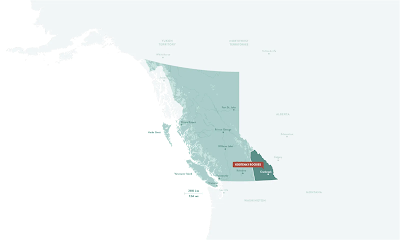CBC/Radio-Canada -
It was a special service Sunday at the Scarboro United Church in southwest Calgary as the community celebrated new Pride banners to send the message that they are a strong and affirming congregation.
"We kind of doubled down with being public, intentional and explicit in our welcome," said Rev. Erin Klassen.
The church has been an affirming congregation for at least 12 years, which means it has gone through a process to ensure it is "open and inclusive to folks of all gender, identity and sexual expressions."
But in March, a banner meant to communicate that fact and welcome LGBTQ people was vandalized — partially burned and ripped and with the word "repent" written across it. Calgary police believe it to be a possible hate crime.
Klassen said initial emotions ranged from worry for queer folks having to walk past a symbol of hate, to anger that someone would be so hurtful. But the community quickly showed support.
"As discouraged as we were when the banners were defaced, the response has been wonderful," she said, calling it a sad way to get a good reminder.

© Helen Pike/CBCRev. Erin Klassen, left, stands beside Elder Marilyn Shingoose,
who led a blessing of the new banners on Sunday.
Three organizations offered to donate new banners, said Sharon Woodhouse, who has been a member of Scarboro United Church for almost 40 years.
"That's just an affirmation for us that we're on the right track and that this is what people need. They need that acceptance and awareness that Scarboro church is going to be where gay people can come and be loved," said Woodhouse.
She said that along with Scarboro, over 50 United churches across Calgary are affirming congregations.

© Helen Pike/CBC
Three organizations offered to donate new banners, said Sharon Woodhouse, who has been a member of Scarboro United Church for almost 40 years.
"That's just an affirmation for us that we're on the right track and that this is what people need. They need that acceptance and awareness that Scarboro church is going to be where gay people can come and be loved," said Woodhouse.
She said that along with Scarboro, over 50 United churches across Calgary are affirming congregations.

© Helen Pike/CBC
Parishioners gathered outside the church where one of the new banners hangs.
The church's two new banners were donated by Reputable Red Panda.
"When we saw the news … we felt it was our obligation to do what we can," said Brandyn Funk, owner of the Calgary printing service.
He is not a member of the church, but supports its inclusive message.
"We wanted to show that although members of the community may not agree with them, the whole community certainly does."
The church's two new banners were donated by Reputable Red Panda.
"When we saw the news … we felt it was our obligation to do what we can," said Brandyn Funk, owner of the Calgary printing service.
He is not a member of the church, but supports its inclusive message.
"We wanted to show that although members of the community may not agree with them, the whole community certainly does."










